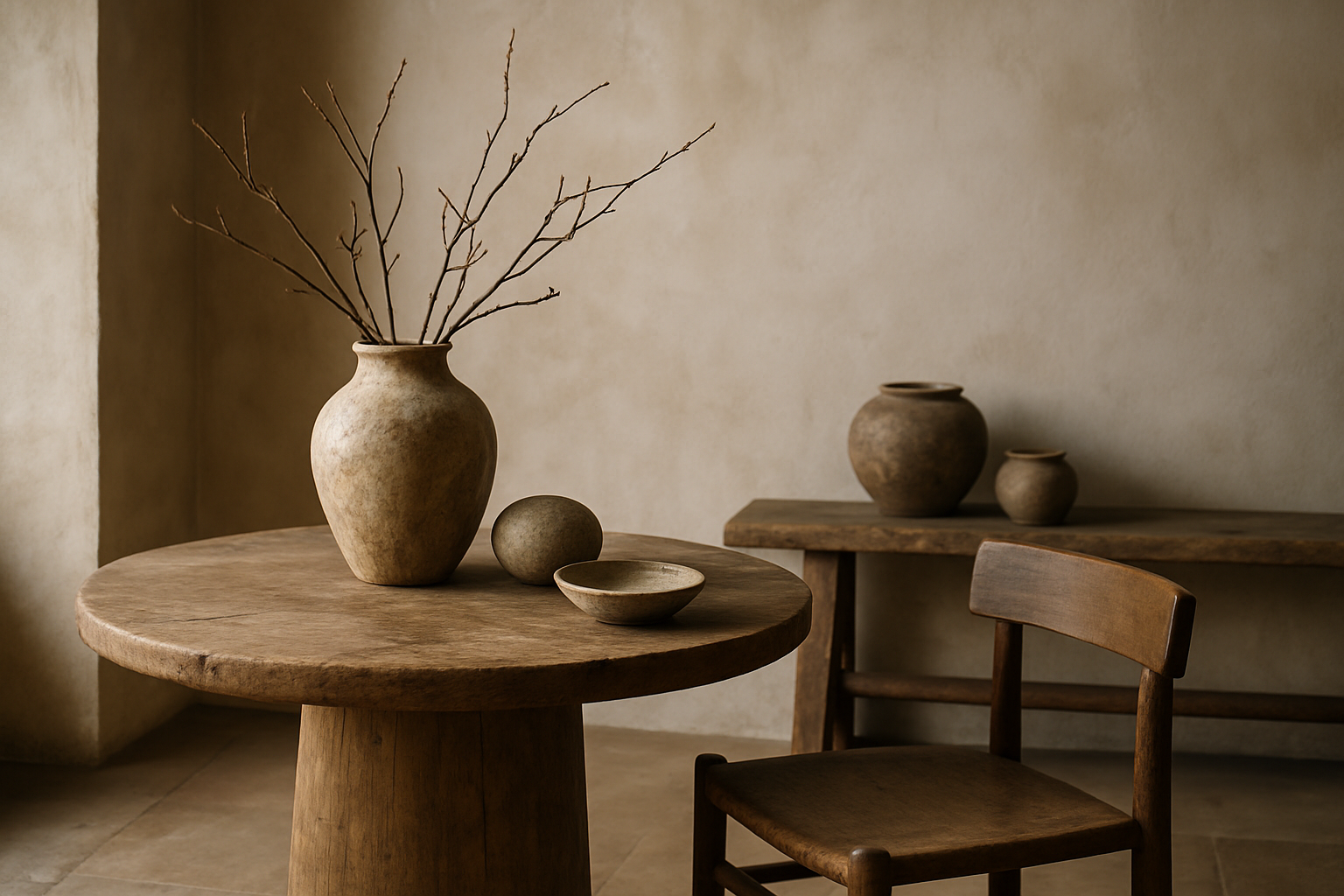Wabi-Sabi: The Art of Imperfect Beauty in Home Design
In a world obsessed with perfection, a quiet revolution is taking place in home design. Wabi-sabi, an ancient Japanese philosophy, is making its mark on modern interiors, offering a refreshing counterpoint to the polished aesthetics that have long dominated the design landscape. This concept, which embraces imperfection and transience, is not just a trend but a mindful approach to creating spaces that feel authentically lived-in and deeply connected to nature.

The Roots of Wabi-Sabi
Wabi-sabi finds its origins in 15th century Japanese tea ceremonies, where simple, rustic tea huts and utensils were preferred over ornate designs. The term wabi originally referred to the loneliness of living in nature, away from society, while sabi meant lean or withered. Over time, these concepts evolved to embody a worldview that finds beauty in simplicity and the natural cycle of growth and decay.
In the context of home design, wabi-sabi translates to an appreciation for natural materials, handcrafted objects, and the patina that develops with age and use. It’s about creating spaces that feel authentic, lived-in, and connected to the natural world. This philosophy stands in stark contrast to the sleek, mass-produced aesthetics that have dominated modern design for decades.
Embracing Imperfection in Design Elements
At the heart of wabi-sabi design is the celebration of imperfection. This doesn’t mean creating intentionally flawed spaces, but rather embracing the natural variations and wear that occur over time. Rough-hewn wooden beams, hand-thrown pottery with visible fingerprints, and stone surfaces with natural fissures all exemplify this principle.
One key element in wabi-sabi interiors is the use of natural materials. Unfinished or lightly treated wood, raw linen fabrics, and stone with visible veining are preferred over their polished counterparts. These materials not only bring a sense of nature indoors but also age beautifully, developing character and patina over time.
Color palettes in wabi-sabi design tend to be muted and earthy, mirroring the hues found in nature. Soft greys, warm browns, and subtle greens create a calming atmosphere that encourages reflection and mindfulness. These colors are often applied in layers, creating depth and interest without overwhelming the senses.
The Art of Curated Clutter
While minimalism advocates for stark, clutter-free spaces, wabi-sabi takes a more nuanced approach. It encourages a kind of curated clutter – a thoughtful arrangement of objects that tell a story and evoke emotion. This might include a collection of mismatched ceramics, a stack of well-worn books, or a display of found natural objects.
The key is in the curation. Each item should have meaning or purpose, contributing to the overall atmosphere of the space. This approach creates interiors that feel deeply personal and lived-in, rather than sterile or staged. It’s about finding beauty in the everyday and appreciating objects for their history and imperfections.
Wabi-Sabi and Sustainable Design
In an era where sustainability is paramount, wabi-sabi offers a refreshing perspective on consumption and design. By valuing imperfection and age, this philosophy encourages us to keep and cherish objects longer, rather than constantly replacing them with newer versions.
This approach extends to furniture and decor choices. Antique or vintage pieces, with their visible signs of age and use, are prized in wabi-sabi interiors. These items not only bring character and history to a space but also represent a more sustainable approach to decorating.
Moreover, the wabi-sabi emphasis on natural materials aligns well with eco-friendly design principles. Materials like untreated wood, stone, and natural fibers are often more sustainable and have a lower environmental impact than their synthetic counterparts.
Creating Harmony Through Asymmetry
Unlike traditional Western design principles that often emphasize symmetry and balance, wabi-sabi embraces asymmetry and irregularity. This approach creates spaces that feel more organic and natural, mirroring the imperfect balance found in nature.
In practice, this might mean arranging furniture in unconventional ways, using odd-numbered groupings of objects, or choosing pieces with irregular shapes. The goal is to create a sense of harmony that feels effortless and uncontrived, rather than rigidly balanced.
This principle extends to architectural elements as well. Exposed beams might be left rough and uneven, while windows and doorways can be placed asymmetrically to create interest and flow. The result is spaces that feel dynamic and alive, constantly revealing new perspectives and details.
The Mindful Home: Wabi-Sabi as a Lifestyle
Beyond aesthetics, wabi-sabi offers a mindful approach to living. By surrounding ourselves with objects and spaces that embrace imperfection, we’re encouraged to do the same in our daily lives. This can lead to reduced stress, increased mindfulness, and a greater appreciation for the present moment.
Incorporating wabi-sabi principles into home design can create spaces that serve as sanctuaries from the chaos of modern life. These interiors encourage slowness, reflection, and a connection to the natural world – all increasingly valuable in our fast-paced, technology-driven society.
As we move forward in an uncertain world, the principles of wabi-sabi offer a comforting and grounding approach to home design. By embracing imperfection, celebrating the passage of time, and finding beauty in simplicity, we can create spaces that not only look beautiful but also nurture our well-being and connection to the world around us. The art of wabi-sabi reminds us that true beauty lies not in perfection, but in the authentic, imperfect, and ever-changing nature of life itself.





